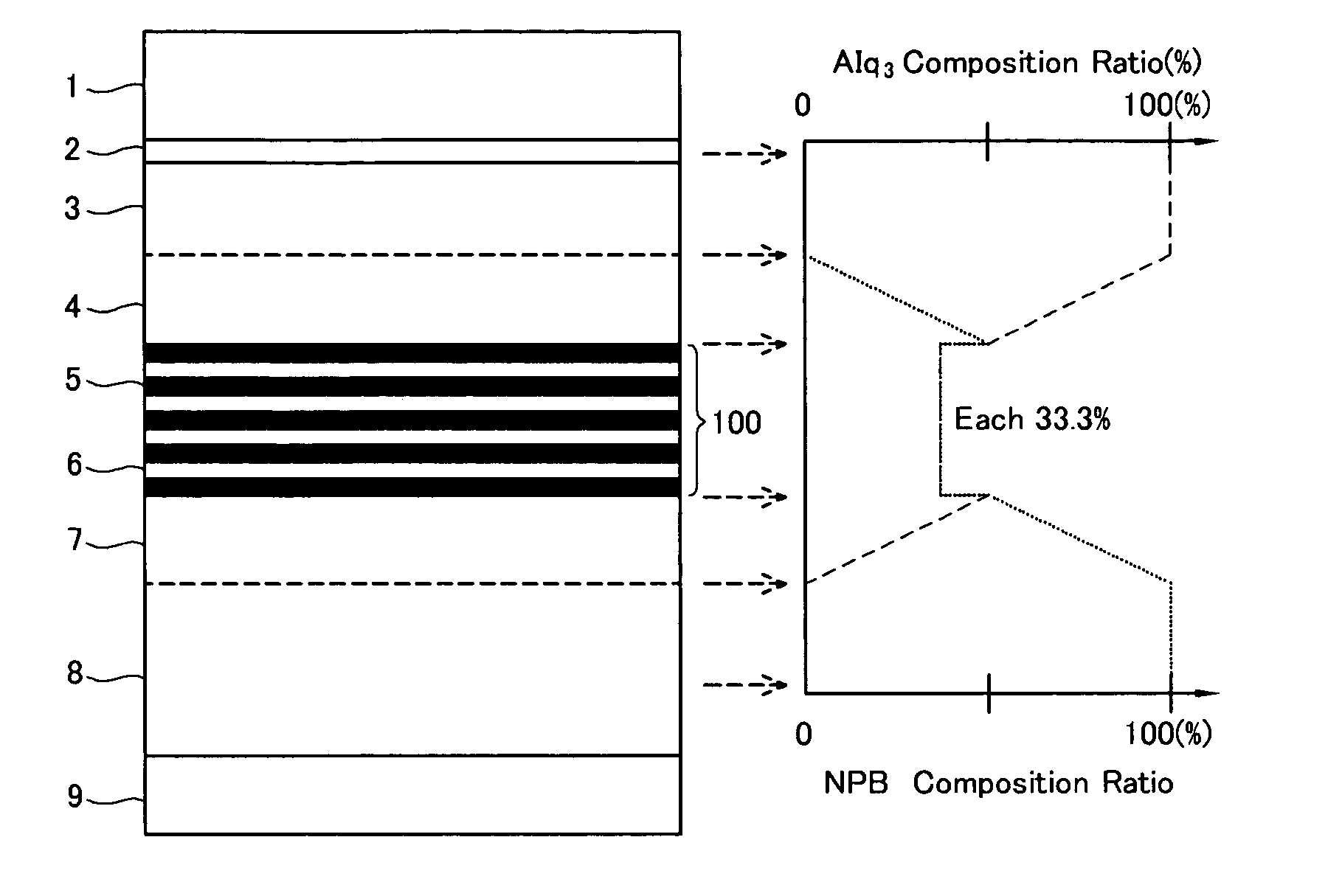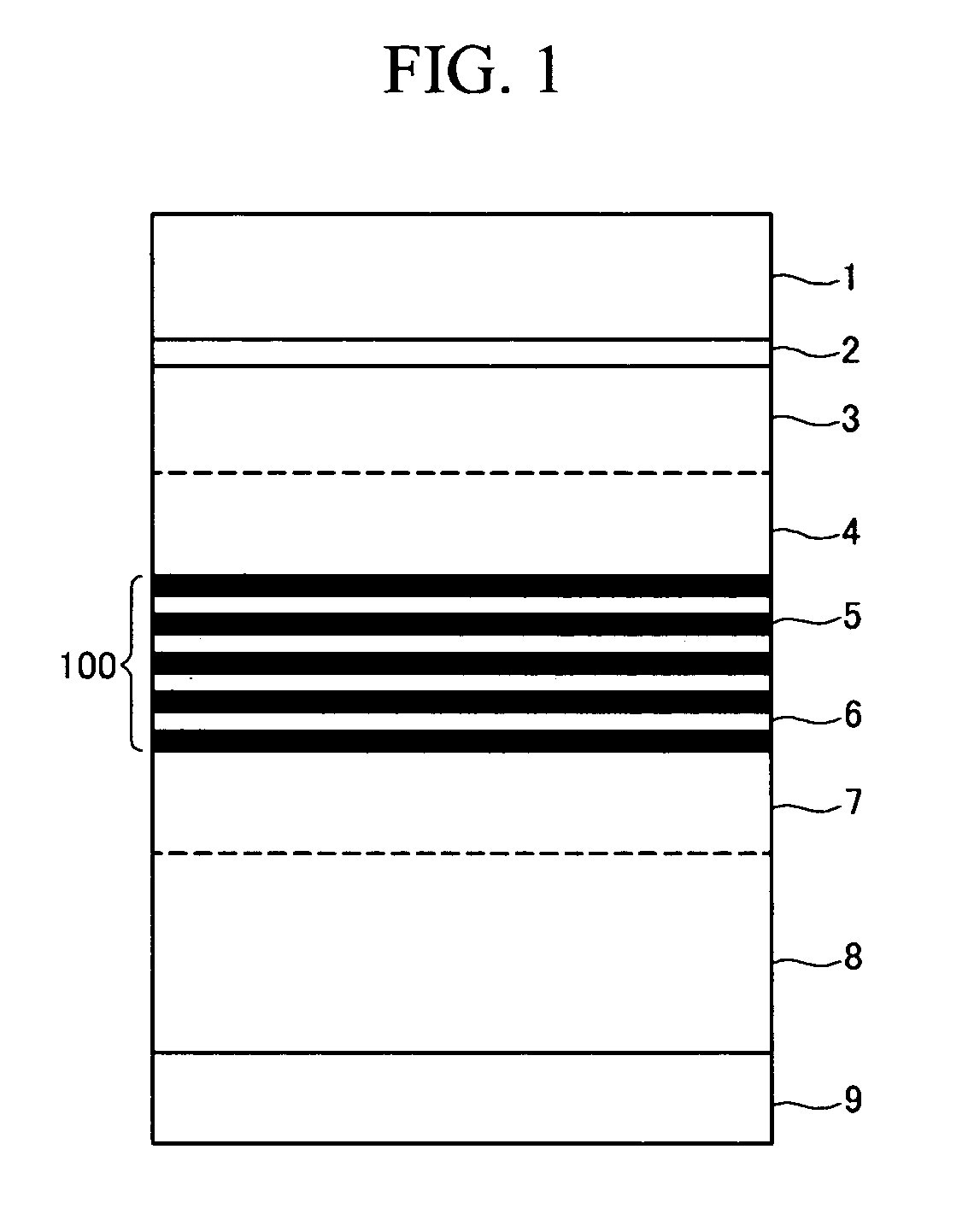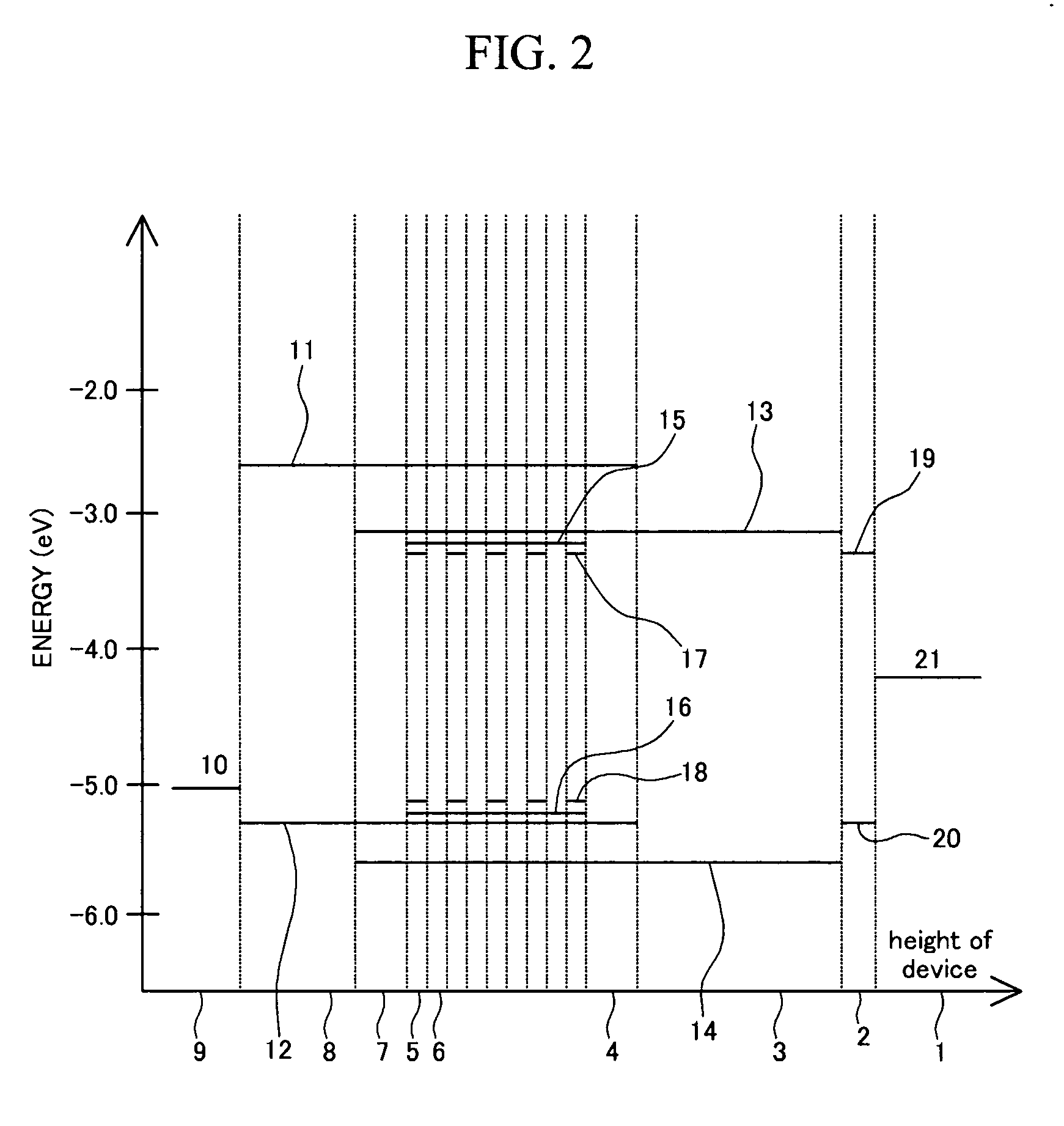Organic light emitting device and manufacturing method thereof
a light-emitting device and organic technology, applied in the direction of organic semiconductor devices, discharge tubes/lamp details, discharge tubes luminescnet screens, etc., can solve the problems of reducing the lifespan of the device, reducing the quantum efficiency of the organic light-emitting device, and high deviation in the number of excitons, so as to improve luminous efficiency and color stability, the effect of prolonging the li
- Summary
- Abstract
- Description
- Claims
- Application Information
AI Technical Summary
Benefits of technology
Problems solved by technology
Method used
Image
Examples
example 1
Manufacture of Organic Light Emitting Device Manufacture of Anode
[0062] An ITO thin film having a thickness of about 100 nm to about 150 nm and having a sheet resistance of about 30 Ω / cm2 was grown on a glass substrate (not shown) by deposition to form an anode 9.
[0063] Manufacture of Hole Transport Layer
[0064] NPB was deposited at 30 nm in thickness under a vacuum of about 10−7 Torr to about 10−9 Torr to form a hole transport layer 8. At this time, the growth rate was kept to be about 0.1 nm / seconds in order to grow a thin film of high quality.
[0065] Manufacture of First Stepwise Concentration Distribution Mixture Layer
[0066] A mixture layer 7 including NPB and Alq3 was deposited to a thickness of about 10 nm at a vacuum degree of about 10−7 Torr to about 10−9 Torr while gradually decreasing the growth rate of NPB, so that it transitioned from 1 Å / sec, to 0.9 Å / sec, to 0.8 Å / sec, and so on, and gradually increasing the growth rate of Alq3, so that it transitioned from 0 Å / sec...
experimental examples
Efficiency of Organic Light Emitting Device
[0075] Measured Current Density as a Function of Voltage in Organic Light Emitting Device
[0076] In addition to the organic light emitting device (denoted by Structure III) manufactured by the above-described method, a conventional organic light emitting device (denoted by Structure I) having hetero-junctions, and another organic light emitting device (denoted by Structure II) in which DCJTB was added into a host-mixture of NPB and Alq3 having a ratio of 1:1, but lacking a multiple quantum well film (e.g., the second mixture film 6), were fabricated. The organic light emitting device having Structure II also have hetero-junctions like Structure I. The above-described organic light emitting devices were made of substantially the same materials and had substantially the same structure except for the above-described features. In order to measure the efficiencies of the organic light emitting devices of the three structures, the current densit...
PUM
 Login to View More
Login to View More Abstract
Description
Claims
Application Information
 Login to View More
Login to View More - R&D
- Intellectual Property
- Life Sciences
- Materials
- Tech Scout
- Unparalleled Data Quality
- Higher Quality Content
- 60% Fewer Hallucinations
Browse by: Latest US Patents, China's latest patents, Technical Efficacy Thesaurus, Application Domain, Technology Topic, Popular Technical Reports.
© 2025 PatSnap. All rights reserved.Legal|Privacy policy|Modern Slavery Act Transparency Statement|Sitemap|About US| Contact US: help@patsnap.com



